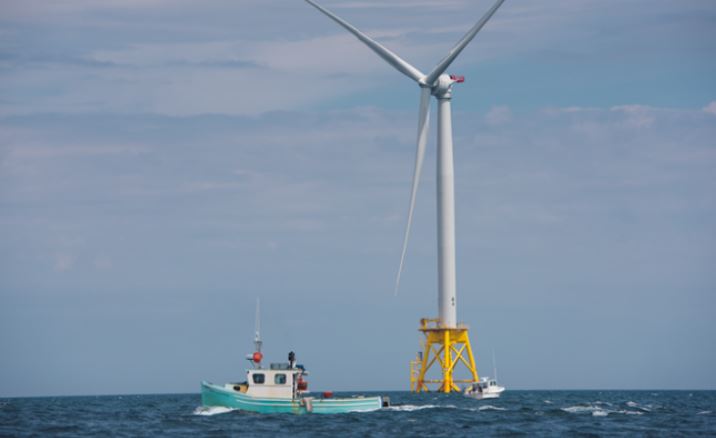Offshore wind turbine arrays planned off the East Coast will likely impede future fisheries surveys, increasing uncertainty in stock assessments and potentially lowering annual fishing quotas, according to a new critique of the federal government’s Vineyard Wind environmental report.
The center is a cooperative research group, including representatives of universities and the fishing industry, organized under the National Science Foundation to pursue fisheries science questions. Its review of BOEM’s environmental assessment raises eight key issues, saying that much more research is needed to clarify the potential impacts of up to 15 Atlantic wind energy projects.
Near the top of the scientists’ concerns is how physical limitations on navigation and fishing amid turbine arrays might affect future NMFS annual survey cruises.
BOEM’s environmental statement “notes that surveys within the turbine field are unlikely and that this will increase uncertainty in assessments, but without any estimates of effect," the paper states.
“For some species, the actual impact would begin with a contraction of the total stock. Simply put, the only recourse in the assessment would be to assume that no stock exists in unsurveyed areas,” the scientists wrote. “The example of the region east of Nantucket and the clam survey is a good example. Here, the fishery has caught clams for many years, yet the region is not surveyed and those clams are not, therefore, included in the stock estimate.”
The paper’s lead author is Eric Powell, the director of the cooperative research center who works at the University of Southern Mississippi’s Gulf Coast Research Center, and as a Rutgers University professor had many years of studying the Northeast and Mid-Atlantic surf clam resource. Co-authors include Andrew Scheld of the Virginia Institute of Marine Science; Pat Sullivan of Cornell University; Josh Kohut, Thomas Grothues and Daphne Munro of Rutgers; Paula Moreno of EcoMarine Integrated Analytics, LLC; and Gavin Fay at the University of Massachusetts Dartmouth.
If NOAA research vessels are not able to survey within the turbine arrays, stock assessments might be skewed downward, the paper states.
“It is important to realize that any unknown generates additional uncertainty that ultimately favors a quota reduction. It is important to realize that this impact is perpetual,” the scientists wrote. “That is, the economic damage is realized each year that the turbine field exists and restricts survey completeness.”
That in turn means that offering affected fishermen and business “a single-year compensation package cannot mitigate the adverse economic impact,” the paper states. “It is important to realize that long-term recovery after decommissioning might result in decadal and longer impacts on fishing of long-lived species, a timeline and effect level not contemplated in the current SEIS.”
Other concerns raised by the science center group focus on the effects that turbine tower structures may have on biological and oceanographic conditions, from larval fish distribution to seasonal cold water flows through the wind energy areas.
The paper was released in the waning days of BOEM’s 45-day public comment period on the supplemental environmental impact statement, now heading into its final months of consideration before the agency issues its record of decision in December.
Fishing and wind energy advocates alike were making their last pitches in the final hours of July 27.
Fishermen called for a five-year moratorium on offshore wind development. Wind power backers pushed BOEM to accept developers’ proposal for a uniform 1-nautical mile grid layout for New England offshore turbines – and turn down fishermen’s wish for dedicated vessel transit lanes up to four miles wide through the arrays.
“We are confident that the deployment of offshore wind can be compatible with commercial fishing and safe navigation, as has been demonstrated in many other countries that are already safely and successfully operating offshore wind farms,” the American Wind Energy Association said in a July 28 statement.
“AWEA strongly agrees with the analysis from the U.S. Coast Guard and BOEM that the turbine spacing and uniform grid layout proposed by offshore developers for the adjacent Massachusetts and Rhode Island lease areas, which is reflected in Alternative D2 in the draft supplemental environmental impact statement and results in 200 transit lanes through the lease areas, will ‘maximize safe navigation,’ as the Coast Guard determined,” the group said. “There is no reason to adopt Alternative F to provide even wider transit lanes when Coast Guard and BOEM analysis demonstrates it is worse for navigation safety.”







